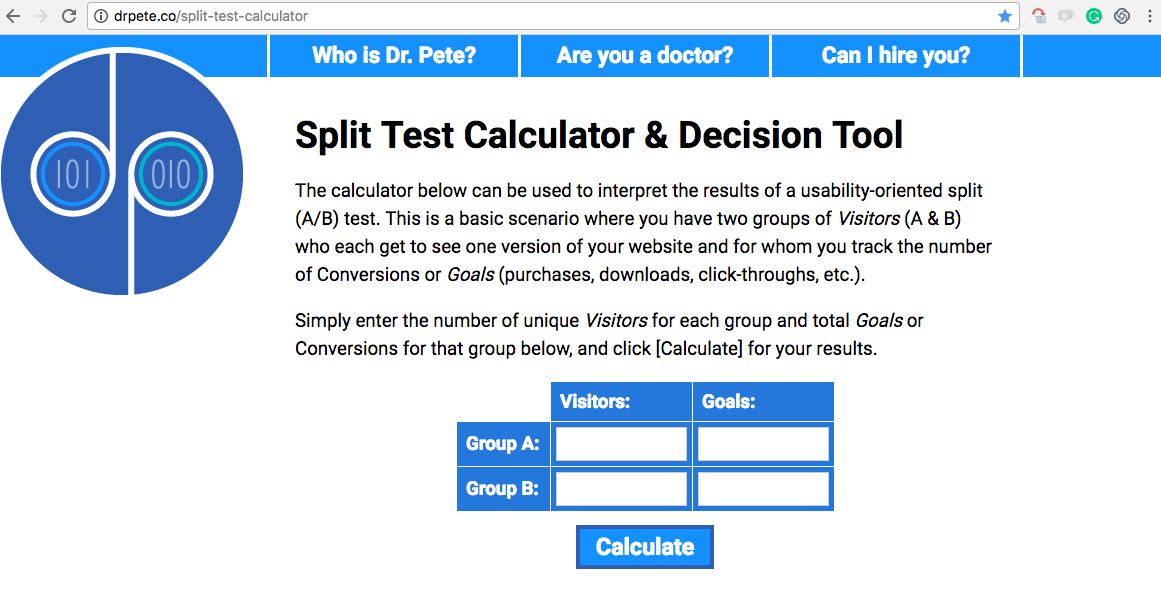For every client we do the same things, but we do it in slightly different ways. We're always driving traffic (Using Google Ads, Bing, Facebook Ads, Pinterest, LinkedIn, Quora, Adroll, Perfect Audience, etc).
We're always measuring the quality of that traffic. Most often in Google Analytics, but if possible in conjunction with a client CRM like Hubspot, Zoho or Salesforce.
We put in a lot of work up front talking about conversions--what we're going to measure and how we're going to assign value. And making sure that we can measure those things effectively.
And beyond the initial set up, we're constantly working to improve something. What that something is can change. But it’s always connected back to the business goals of our clients and grounded in our quantitative, ‘if you can’t measure it, you can’t affect it’ mentality.
The CYS mission statement:
Drive more sales for our clients with an effective and measurable traffic acquisition strategy.
How Do We Do It?
It goes like this--get analytics set up, get traffic coming in, measure, compare, start new test. It’s a framework we use to replicate success across industries. In more detail:
Part One - Conversion Tracking Set Up + Ad Accounts Set Up + Remarketing + Keyword Research
The key takeaway here is getting analytics right. Everything follows from our ability to accurately measure outcomes.
- Confirm Google Analytics is set up correctly
- Set up conversion tracking in Google Analytics and import conversion tracking back to Adwords or any other advertising network in use
- Get Google Tag Manager installed so we can track and measure any imaginable scenario on a website
- Get all the necessary access to existing Adwords, Bing, Facebook ads accounts or set up new ones, and make all the necessary connections for proper conversion tracking
- Set up all remarketing pixels that will be used for future campaigns
- Develop a complete understanding the way money moves through the business and use that to model our entire acquisition strategy. How much is a customer worth to your business? What is your historical close rate to sale?
- Use the financial model and everything we've learned about your business from you and our research of your competitors to inform our keyword research
- Build v1 versions of all campaigns and start pushing traffic
That financial model part is important, obviously. But it’s a part a lot of marketing companies seem to skip over. Here’s an example of an analysis, in this case for highly competitive vertical with average CPC’s around $40, but high CPC’s approaching $100.
There are a ton of formulas in there, and the first three columns are the inputs: CPC, Conversion rate to paying customer, and AVS (Average value per sale).
With just those three points we can model the entire funnel. And if we know the profit margin for the business, we can model all the way down to net ROI.
These estimates help frame out the rest of our strategy.
Part Two - Campaign Set Up + Traffic Testing & Optimization
Part two is all about iteration—creation of new keyword strategies, implementing advanced bidding technology, setting up remarketing campaigns, and reworking ad copy for continuous improvement.
But it’s not the trying new stuff part that’s important. It’s our process for working through those ideas in a systematic way. This is really our secret weapon. And of course, it’s a spreadsheet.
There are some important ideas here to highlight:
- This view is typically set up for each campaign, but we also often apply the idea to concepts that combine campaigns or even channels
- The left section is reversed for accounts we take over that have historical information available. We always set a baseline. In this case for this campaign, it’s a year’s worth of data and 96 conversions
- The right side is where the magic happens. The basic idea is--try something and mark down the date the change was implemented. Then collect data
- We have a framework for deciding when a test is valid, although it varies from account to account somewhat. For a test to be valid, we need:
- 2 out of 3 of these:
- +10 conversions
- +45 days
- +$500 spend
- AND 90% confidence using our favorite split test calculator
- 2 out of 3 of these:
And when we do something that results in a statistically relevant positive result--we start the process all over again, and try to beat our newly set best mark (which we keep highlighted in green).
Simple, right?!
It can be labor intensive. But the end result is that we have more understanding and more control over the outcomes in our client’s accounts. We’re not just guessing.
Part Three - Conversion Rate Optimization
By now we usually have a solid understanding of variances in conversion rate by traffic source and we’ve done some good conversion rate optimization in Google Ads and our other digital marketing channels.
Next stop--landing page tests.
It’s always the case that after, and even sometimes before optimization can be fully worked out within the ad accounts--that we need to get our landing page game right.
We’ve seen a lot of different situations here. And the truth is one-size-fits-all is just not true when it comes to landing pages. But the results can have a make-or-break impact on the overall success of a campaign.
And That’s All There Is to It!
I’m being a little tongue in cheek there, for sure. It’s a lot of work. And that’s why we like to set ourselves up for success by planning for it to take some patience to get through.
But on the other side of all this work is a predictable digital marketing funnel that’s designed from the ground up to produce replicable results and a system for ongoing optimization. That’s the CYS process!


